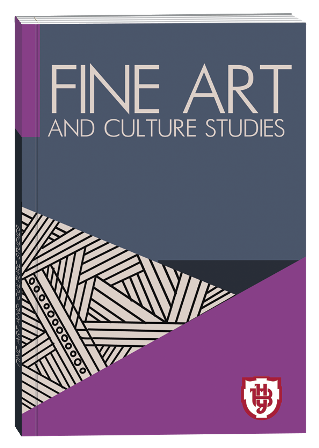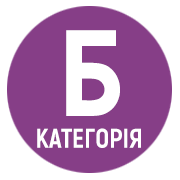«FLAMENCO CODE»: STRUCTURAL COMPONENTS AND THEIR INTERACTION IN ARTISTIC PRACTICE
DOI:
https://doi.org/10.32782/facs-2022-4-8Keywords:
traditional culture, Spanish music, flamenco code, cante, baile, toque, musical means of expression, genre, semantics, systematicity.Abstract
The article is devoted to the researching, identification and analysis of the flamenco art’s communication features. The uniqueness of this phenomenon lies in the organic combination of the authenticity, while at the same time easy adaptability to modern realities. Its manifestations are perceived as a certain artistic unity, which has its own characteristic face. It is well recognized in any formats. In our time, a separate branch of musicology has developed into flamencology, which focuses on the study of this phenomenon. Scientists studied the historical aspects of the emergence of this phenomenon, selected methods for its analysis, features, manifestations and development. For the first time, not only in domestic but also in world musicology, we offer to pay attention not only to the methods and means used by flamenco performers to create an artistic effect, but also to build them into a common unity, a system. We try to unravel the secret of flamenco's ability to communicate with any authentic, social and cultural environments without losing its own "core". In this paper, based on the results of the conducted analysis, we propose the idea of flamenco analysis precisely through the specificity of the core phenomenon, which we call the "flamenco code". According to the purpose of the article, the parameters of the "flamenco code" are defined in the study, the means of expressiveness of the audio, verbal and plastic channels of information are considered, and the “code” of their interaction and communication is formed. The research methodology consists in the use of an analytical method (study of flamenco composition, study of its individual structural features), systemic (determination of the correlation of communication channels), performance-interpretological (analysis of specific flamenco performance samples), and the method of deciphering folklore authenticity was also widely used. This work has three subsections, each of which is dedicated to the study and documentation of the characteristic features of cante, baile and toque (singing, dancing and instrumental performance). During the study of each of the components, examples of the integrative nature of their coexistence, influence on each other are given, and the specificity of communicative principles during the construction of a common artistic whole is determined.
References
Грабович Г. До історії української літератури: дослідження, есе, полеміка. Київ, 1997. С. 543–570.
Козаренко О. Феномен національної музичної мови. Львів : Н. товариство ім. Шевченка, 2000. 268 с.
Тодоров Ц. Поняття літератури та інші есе. Київ : В.д. Києво-Могилянська акад., 2006. 162 с.
Фалья М. Статьи о музыке и музыкантах. Москва : Музыка, 1971. 109 с.
Caballero Bonald Colita J. M. Luces y Sombres del Flamenco. Sevilla : Published by J. M. Lara, 2006. 344 p.
D’Aviller J. Ch. Spaine By The Baron Ch. D’Aviller. London : Bickers&Son, 1881. 485 p.
Fernandez B., Angel M. «El flamenco en tiempos del cancionero de Eduardo. Cuadernos de arte». Universidad de Granada, V. 26, 1995. P. 321 – 335.
Flamenco Vivo. Camaron de la Isla. Indice de la Collection de Letras. URL: http://canteytoque.es/letrastodas.htm.
Liturgia. La palabra (I) – con Jose Maya. URL: https://www.deflamenco.com/agenda-flamenco/liturgia-la-palabrai- con-jose-maya.
Martínez de la Pena T. Teoría y práctica del baile flamenco. Madrid : Aguilar SA de Ediciones, 1969. 142 p.
Monastero Heras B. «La construcción histórica del baile flamenco como disciplina formativa: andalucía en los siglos xvi-xxi// the historical construction of flamenco dancing as an educational». Ie revista de investigación educativa de la rediech, V. 9/17, 2018. P. 145 – 164.
Navarro Garcia J. L., Lozano P. E. El baile flamenco: una aproximacion historica. Almuzara : Cordoba, 2005. 205 p.
Pedrell F. Por Nuestra Musica : Barcelona, 1891-1892. 96 p.
Plasencia P. El Cante Flamenco. Editorial : Revista de Letras, 1983. P. 83 – 100.
Steingress G. Sosiologia del cante flamenco (biblioteca de estilos flamencos). Sevilla : Centro andaluz de flamenco, 1993. 432 p.
Steingress G. «La hibridación transcultural como clave de la formación del Nuevo Flamenco (aspectos históricosociológicos, analíticos y comparativos)». Musica oral del Sur. Revista International, № 6, 2005. P. 119 – 152.
Verguillos J. Conocer el flamenco. Madrid : Signatura ed, 2006. 160 p.
West, Ch. «Memory – Recollection – Culture – Identity – Space: Social Context, Identity Formation, and Selfconstruction of the Calé (Gitanos) in Spain». Cultural Memories. The Geographical Point of View, Knowledge and Space, vol. 4. 2011. 101–119 p.







